The END
At the end of the war, Stobs became one of the main resettlement camps in Britain. Some 2000
Polish soldiers were placed under canvas until they were demobilised. Some made their homes in Hawick and married
local girls.
In November, 1947, the Government proposed to extend the camp to 22,000 acres. But the planned expansion never
happened and Stobs remained as a summer only camp. Gradually, the number of men training lessened, until, towards
the end of the 1950's, the military authorities abandoned the camp altogether.
Noteable Artifacts Found at Stobs
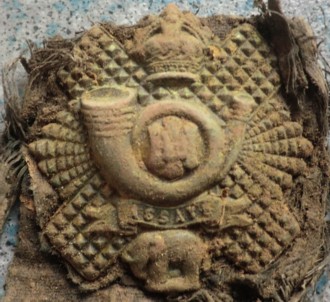
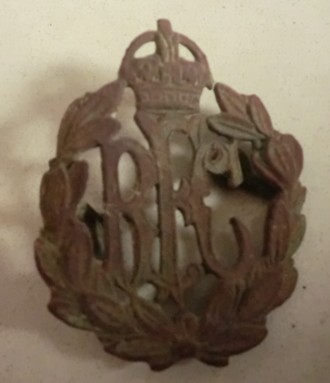
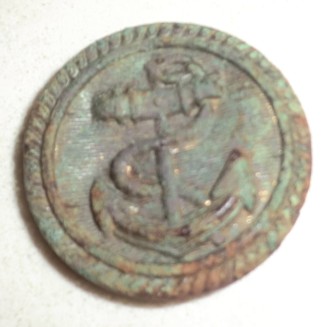
Highland Infantry Cap Badge
Royal Flying Corps Cap Badge
WW1German naval button
Found complete with its original cloth backing.
The Royal Flying Corps (RFC) was the air arm of the British Army during the First World War, until it merged with the Royal Naval Air Service on 1 April 1918 to form the Royal Air Force.
Why a RFC cap badge should be found at Stobs defies me.
An amazing find.
An original German Naval button dating from the Great War.
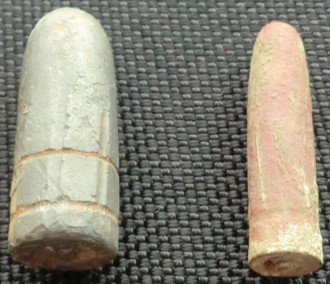
Large calibre Martini Henry bullet next to a standard .303 bullet
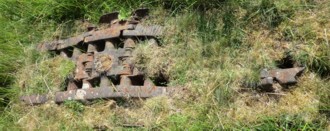
Tank tracks near the Barnes Loch
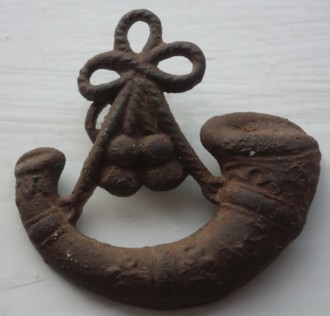
Cap badge of the Ox & Bucks Regiment


